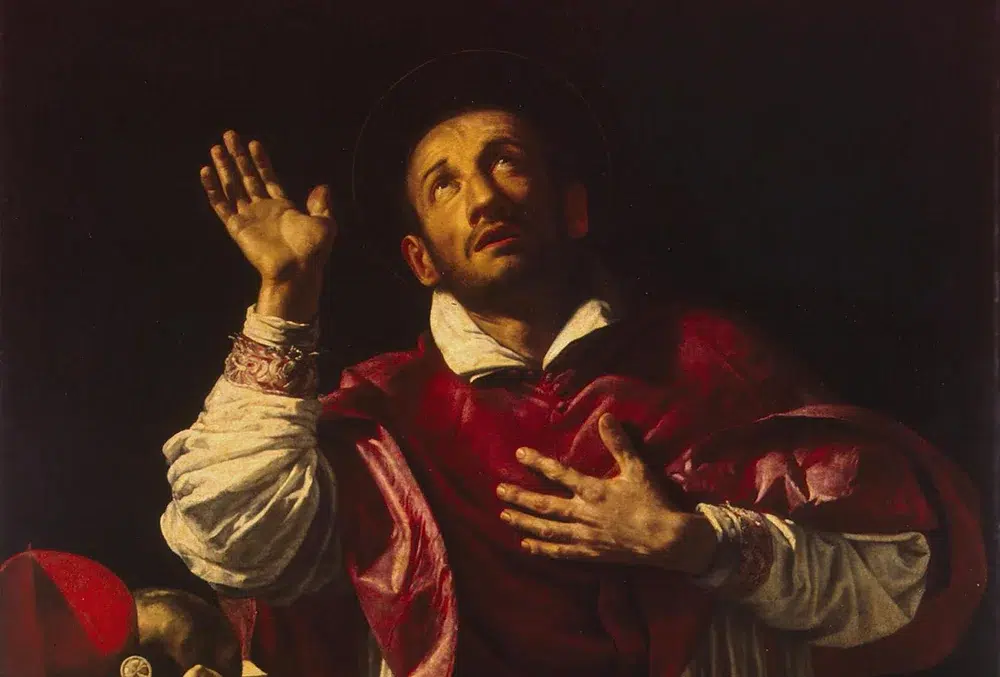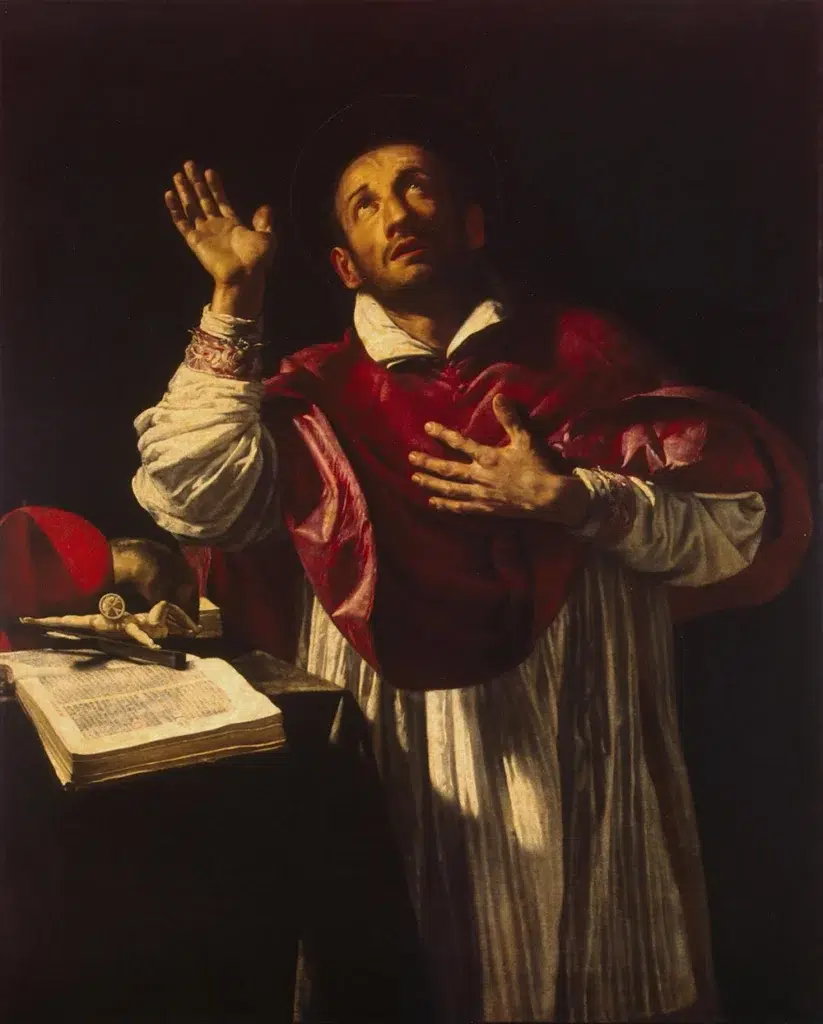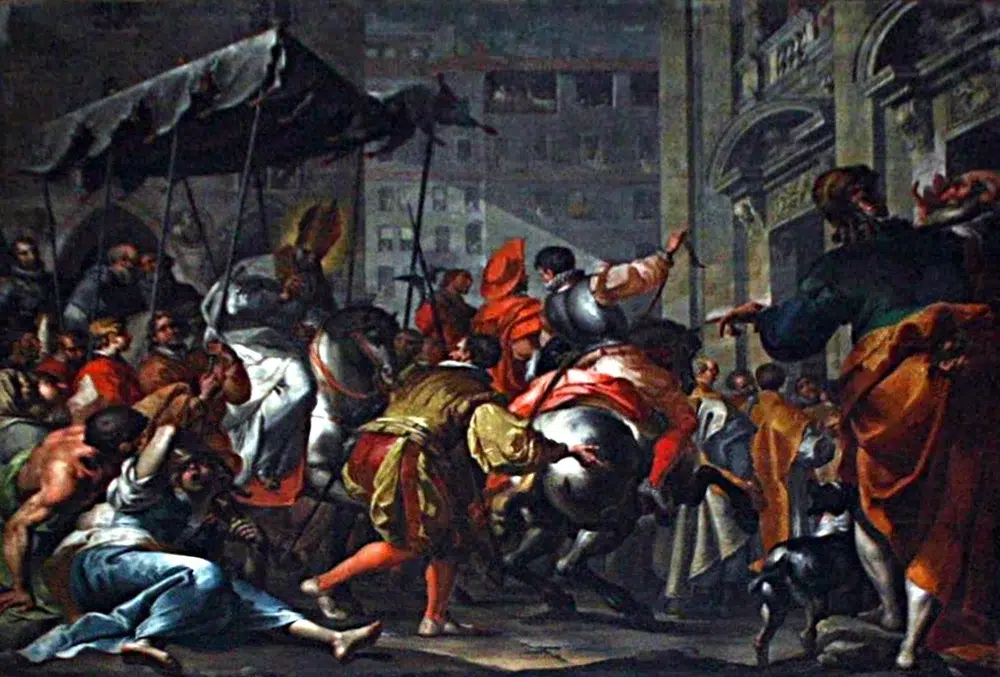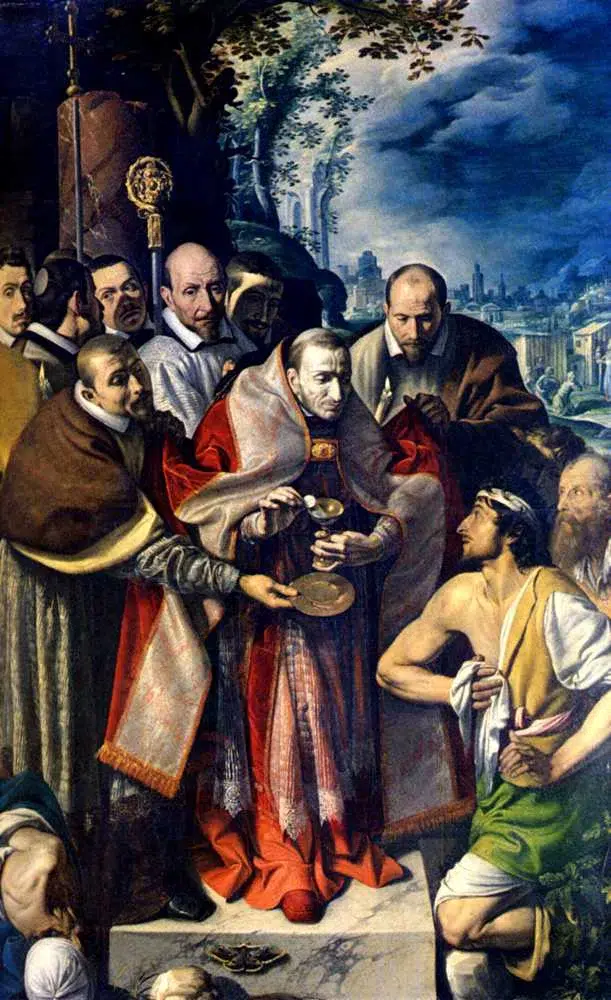
St. Charles Borromeo was one of the most important persons of the Catholic Reformation, also known as the Counter-Reformation, in the 16th century. A man who was born into the opulence of the nobility and chose service and austerity.
His life shows how a priest, Armed with an iron will and faith, he can help transform the Church. He is remembered as a model pastor for his love of the Church. formation of seminarians and catechists.
Charles Borromeo was born on October 2, 1538 in the castle of Arona, on Lake Maggiore (Italy). His family, the Borromeo, was one of the oldest and most influential of the Lombard nobility. His father was Count Gilberto II Borromeo and his mother Margarita de Medici.
This maternal kinship would mark his destiny in a decisive way. His maternal uncle, Giovanni Angelo Medici, would become Pope Pius IV. From a young age, Charles showed remarkable piety and a serious inclination towards study, despite suffering from a slight speech impediment.
At the age of twelve, his family had already destined him for an ecclesiastical career, receiving the tonsure and the title of commendatory abbot. He studied Canonic Law and Civil Engineering at the University of Pavia.
The life of St. Charles Borromeo changed in 1559. After the death of Pope Paul IV, his maternal uncle was elected Pope, taking the name Pius IV. Almost immediately, the new pope called his nephew to Rome.
In 1560, at only 22 years of age and without having been ordained priest still, Charles was named cardinal deacon. It is essential to understand that, at that time, the cardinalate was often a political and administrative position. Pius IV also appointed him secretary of state of the Holy See.
It became, de facto, the most powerful man in Rome after the pope. He administered the affairs of the Papal States, managed Vatican diplomacy and oversaw countless projects. He lived like a Renaissance prince, surrounded by luxuries, although he personally maintained his piety.

The life of St. Charles Borromeo in Rome, although administratively efficient, was mundane. However, a tragic event shook his conscience: the sudden death of his older brother, Frederick, in 1562.
This loss caused him to reflect deeply on the vanity of the earthly life and the urgency of eternal salvation. Frederick was the heir of the family, and his death put pressure on Charles to leave the ecclesiastical life to ensure offspring.
Charles rejected this idea. He experienced a profound spiritual conversion. He decided that he would no longer be a lay administrator with a cardinal's title, but a true man of God. In 1563, it sought ordination and was consecrated priest, and soon after, bishop. His life changed radically: he adopted a lifestyle of extreme austerity, fasting and prayer.
The great work of the pontificate of Pius IV was the resumption and completion of the Council of Trent (1545-1563), which had been blocked for years. St. Charles Borromeo, In his position at the Secretariat of State, he was the diplomatic and organizational driving force that brought the Council to a successful conclusion in its final phase.
It was he who managed the tense negotiations between the European powers (Spain and France), the papal legates and the bishops. His tenacity was key to the council defining Catholic doctrine in the face of the Protestant reform and, crucially, establishing the decrees for the internal reform of the Church.
The council ended, St. Charles Borromeo did not rest. He dedicated himself body and soul to implementing his decrees. He chaired the commission that drafted the Roman Catechism (or Catechism of Trent), a fundamental tool for instructing the faithful and unifying teaching.

While in Rome, St. Charles Borromeo had been appointed archbishop of Milan in 1560. However, as was the custom of the time, he governed his diocese "in absentia" through vicars. He was a "shepherd without a flock".
The very Council of Trent that he helped conclude forbade this practice and required bishops to reside in their dioceses. True to his principles, Charles begged his uncle, the pope, to allow him to leave the glory of Rome for the difficult Milan.
In 1565, Pius IV agreed. The entry of St. Charles Borromeo in Milan marked the beginning of a new era. For the first time in almost 80 years, Milan had a resident archbishop.
Milan's challenge: a diocese in ruins
The archdiocese of Milan which found Charles Borromeo was a reflection of the ills of the pre-Tridentine Church. It was one of the largest and richest dioceses in Europe, but spiritually it was in anarchy.
The clergy were deeply relaxed and poorly trained. Many priests did not keep celibacy, lived luxuriously or were simply ignorant of basic doctrine. The religious ignorance of the people was vast. The monasteries, both male and female, had lost their discipline and had become centers of social life.
The relentless reform of St. Charles Borromeo
St. Charles Borromeo applied the decrees of Trent with superhuman energy. His method was clear: to visit, regulate, form and lead by example.
He began by reforming his own archiepiscopal house. He sold the luxurious furnishings, drastically reduced his servants and adopted an almost monastic regime of life. His example as priest austere was his first reform tool.
He began pastoral visits, tirelessly touring each of the more than 800 parishes in his diocese, many in difficult-to-access mountainous areas in the Alps. He inspected the churches, examined the clergy and preached to the people.
To implement the reform, he convoked numerous diocesan synods and provincial councils, where he promulgated strict laws to correct the abuses of the clergy and laity. He was not afraid to confront the nobles and Spanish governors, who saw his authority as an intrusion.
The creation of the seminar
St. Charles Borromeo understood perfectly well that the reform of the Church was impossible without a well-trained clergy. The Council of Trent had ordered the creation of seminars for this purpose, but the idea was at a very theoretical level.
Charles was the absolute pioneer in its practical implementation. He founded the major seminary in Milan in 1564, making it the model for the entire Catholic Church. He went on to establish minor seminaries and schools (like the Helvetic, to train clergy against Calvinism).
He established strict rules for the spiritual, academic and disciplinary life of every seminarian. I wanted the future priest was a man of deep prayer, learned in theology and morally blameless. The figure of the seminarian modern, dedicated exclusively to his formation for ministry, is a direct inheritance of the vision of St. Charles Borromeo. For this reason, he is considered the patron saint of all seminarian.

A priest for his people
The defining moment of the heroism of St. Charles Borromeo was the terrible plague that devastated Milan between 1576 and 1577, known as the plague of St. Charles.
When the epidemic broke out, the civil authorities and most of the nobles fled the city to save themselves. St. Charles Borromeo he stayed. He became the moral, spiritual and, in many ways, civil leader of the disease-ridden city.
He organized field hospitals (lazarettos), gathered his faithful clergy and urged them to care for the dying. He himself went through the most infected streets, giving Communion and Extreme Unction to the plague-stricken, without fear of contagion.
He sold his remaining possessions, including the tapestries of his palace, to buy food and medicine for the poor. So that the sick who could not leave their homes could attend Mass, he ordered the Eucharist to be celebrated in public squares. His figure, leading barefoot penitential processions through the city, became an important figure in the city's history. symbol of hope.
Opposition and attack
The reform of St. Charles Borromeo was neither easy nor popular. His rigor earned him powerful enemies. He constantly clashed with the Spanish governors of Milan, who tried to limit his jurisdiction.
But the most violent opposition came from within the Church. The Humiliati, The friars, a religious order that had become morally lax and possessed great wealth, refused to accept his reform. In 1569, a member of this order, Friar Girolamo Donato Farina, attempted to assassinate him.
While St. Charles Borromeo While he was praying on his knees in his chapel, the friar shot him in the back with an arquebus at point-blank range. Miraculously, the bullet only tore his vestments and caused a slight bruise. The people saw this as a divine sign, and Pope Pius V suppressed the order of the Humiliati shortly thereafter.
Legacy, death and canonization
The constant effort, extreme penances and tireless work exhausted the health of St. Charles Borromeo. In 1584, while performing a spiritual retreat on Mount Varallo, he contracted a fever.
He returned to Milan gravely ill and died on the night of November 3, 1584, at the age of 46. His last words were Ecce venio (Here I come).
His reputation for holiness was immediate. The people of Milan venerated him as the priest martyr to charity and reform. The process of canonization was extraordinarily rapid for the time. He was beatified in 1602 and canonized by Pope Paul V in 1610.
St. Charles Borromeo is universally recognized as the patron saint of bishops, catechists and, in a very special way, of all the bishops and catechists. seminarian and spiritual director. His influence on the definition of the priest post-Tridentine - formed, pious and dedicated to his people - is incalculable.
Table of Contents